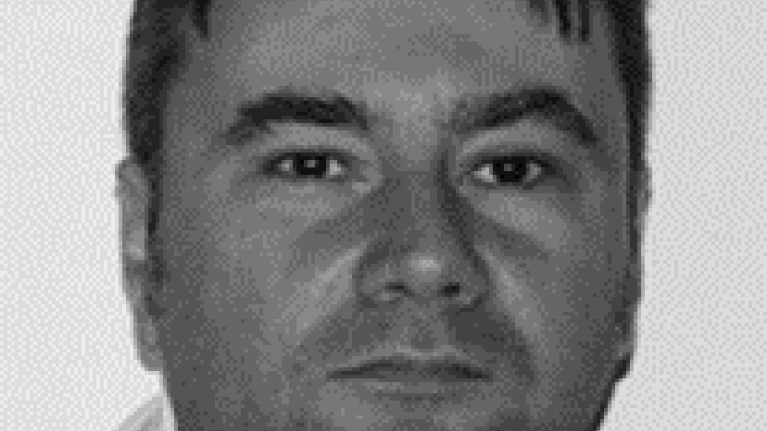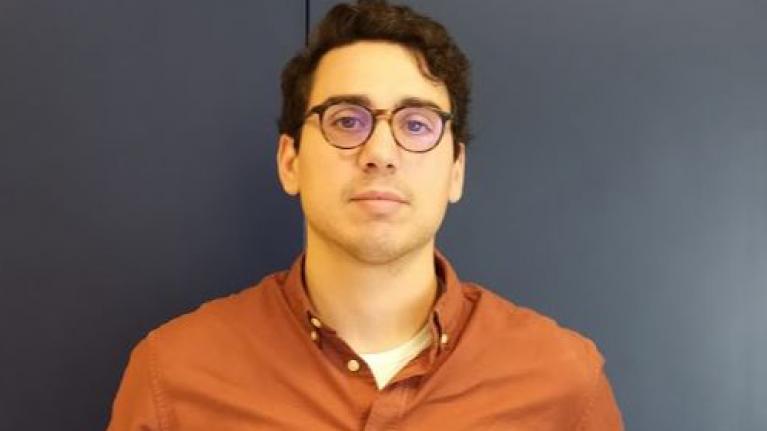2nd International Workshop on Signal Processing Techniques for Ground Penetrating Radar Applications (SPT4GPRA 2020)

About the event
SPT4GPRA 2020 Workshop
Please note that the workshop is co-located with the IEEE TSP 2020 International Conference and will take place during the conference, on Wednesday 8 July, 11am - 2pm.
Due to COVID-19 restrictions, the conference will now take place online.
Latest workshop news
- The full programme has been announced.
- Special Issue in Remote Sensing (Impact Factor: 4.509) linked with the workshop.
Virtual Session - Milan II
-
Prospecting an Archaeological Site by GPR: The Case Study of the Buried Necropolis Laurentina
- Luca Bianchini Ciampoli, Roma Tre University, Italy
- Nikos Economou, Technical University of Crete, Greece
- Roberta Santarelli, Roma Tre University, Italy
Nowadays the use of Ground Penetrating Radar (GPR) in archaeology has spread widely, indicating this method to be an effective means of detection and mapping of buried remains.
However, some limitations have been reported by researchers and users, mainly related to the low resolution or penetration depth of the electromagnetic (EM) signal, especially in highly dispersive soils. In such a context, a robust and data adaptive processing scheme may increase the reliability of the interpretation of the GPR data. This work reports on a case study concerning a preliminary geophysical survey at an archaeological site with interest in the presence of a buried roman necropolis.
The tests have been carried out by means of a ground-coupled dual-frequency GPR system, over a rectangular area defined by a regular grid with 1 m spacing interval between each scan line. A specific processing protocol has been applied to the collected dataset in order to maximize the interpretability of both the radargrams and the extracted depth slices. As a result, the analysis allowed to recognize two areas dominated by regular flooring whereas, at shallower levels, it permitted to detect a pattern of walls.
-
Cultural Heritage Monitoring via GPR Enhanced by Microwave Tomography
- Ilaria Catapano, Institute for Electromagnetic Sensing of The Environment, National Research Council of Italy, Italy
- Gianluca Gennarelli, Institute for Electromagnetic Sensing of The Environment, National Research Council of Italy, Italy
- Giovanni Ludeno, Institute for Electromagnetic Sensing of The Environment, National Research Council of Italy, Italy
- Luigi Capozzoli, Institute for Electromagnetic Sensing of The Environment, National Research Council of Italy, Italy
- Francesco Soldovieri, Institute for Electromagnetic Sensing of The Environment, National Research Council of Italy
Ground Penetrating Radar (GPR) is a popular non-invasive diagnostic device suited for cultural heritage (CH) monitoring applications thanks to its capability to detect targets located in visually opaque media.
In this contribution, we provide a brief overview on the main technical aspects to assure a reliable use of GPR technology within CH monitoring and archaeological prospections.
The main emphasis is given to the data processing, and in particular to the microwave tomography approach. A case study regarding the 3D subsurface mapping of a crypt flooring in the Sant’Agnese church of Roma, Italy, is reported for demonstration purposes.
-
GPR Data Collection and Processing Strategies for Railway Ballast Evaluation
- Luca Bianchini Ciampoli, Roma Tre University, Ital
- Alessandro Calvi, Roma Tre University, Italy
- Fabrizio D'Amico, Roma Tre University, Italy
- Fabio Tosti, University of West London, United Kingdom
Railways are important assets requiring continuous and effective monitoring. Within this context, non-destructive testing (NDT) methods are gaining momentum including, amongst others, the ground-penetrating radar (GPR) technique.
GPR has proven its viability at providing effective condition-based assessment of railway ballast and identifying several different sources of decay. In this paper, the main challenges related to the data collection and processing stages for railway ballast investigations are reported.
In addition, a review of main survey protocols and data processing strategies, including state-of-the-art research in this area of endeavour is presented, in terms of the issues related to the configuration of the track-bed structure (i.e., the effects of rails and sleepers on the signal) and the main inspection targets (i.e., ballast fouling, water content and segregation of the aggregates).
-
A Reflectivity-Based GPR Signal Processing Methodology for Mapping Tree Root Systems of Street Tree
Livia Lantini, University of West London (UWL), United Kingdom
Iraklis Giannakis, University of West London (UWL), United Kingdom
Fabio Tosti, University of West London (UWL), United Kingdom
Dale Mortimer, London Borough of Ealing, United Kingdom
Amir M. Alani, University of West London (UWL) United Kingdom
Street trees are broadly acknowledged to be an essential asset of cities. Nonetheless, the growth of tree roots can lead to critical damages, such as uplifting or cracking of road pavements and curbs, with severe repercussions for infrastructures’ safety.
For this reason, assessment and control of tree root systems’ development have become a crucial task to pursue. Within this framework, Ground Penetrating Radar (GPR) is widely recognised as a valid non-destructive testing (NDT) method for the monitoring and assessment of road infrastructures.
This study aims to demonstrate the capability of GPR in mapping the architecture of street trees’ root systems. To this end, a GPR system equipped with a 700 MHz central frequency antenna was employed to investigate the area around a street tree, partially covered by a flexible pavement structure. A novel processing framework based on the analysis of the signal reflectivity was implemented, in order to automatically identify the reflections given by the pavement layers and apply advanced signal processing techniques accordingly. A multistage data processing methodology was employed to map the tree root system architecture. Finally, information on the mass density of roots at different depths was also provided. Results have proven the potential of the proposed methodology for automatic detection and mapping of roots under road pavements.
-
Assessing the Internal Structure of Hollow Trees Using GPR and Microwave Tomograph
Fabio Tosti, University of West London (UWL), United Kingdom
Gianluca Gennarelli, National Research Council, Italy; Livia Lantini, University of West London (UWL), United Kingdom
Ilaria Catapano, National Research Council, Italy
Lilong Zou, University of West London (UWL), United Kingdom
Francesco Soldovieri, National Research Council, Italy
Amir M. Alani, University of West London (UWL), United Kingdom
Trees and woodlands are nowadays threatened by variety of aggressive diseases and fungal infections. As a result, internal decays in trees, can lead to the creation of cavities and large holes inside the trunks, which in turn can seriously undermine the stability and the integrity of the tree. In this regard, ground-penetrating radar (GPR) has recently proven to be an effective non-destructive testing (NDT) method, with the potential of providing information about the internal structure of trees.
However, the particular shape of tree trunks prevents the use of traditional data processing techniques, and only limited information can be collected for tree health assessment purposes. This study shows the potential of GPR enhanced by a microwave tomography inversion approach in detecting tree cavities and hollows.
A hollow tree was investigated by performing a set of circular GPR scans, and the internal structure of the trunk was reconstructed via tomographic imaging. The achieved results were validated by way of comparison with real sections cut from the tree and prove the validity of the proposed methodology in identifying the dimension and shape of cavities and hollows in tree trunks.
-
A Combination of Deterministic Regularizations and Genetic Algorithms in Two-dimensional Inverse Scattering Problems
Yangqing Liu, University of Illinois at Chicago, United States
Francesco Soldovieri, Institute for Electromagnetic Sensing of The Environment, National Research Council of Italy, Italy
Danilo Erricolo, University of Illinois at Chicago, United States
The present contribution deals with a reconstruction approach to the inverse electromagnetic scattering problem based on the joint exploitation of the deterministic linear inversion and global optimization strategies. The deterministic approach is based on the Born iterative method (BIM) enhanced by regularization techniques, such as Algebraic Reconstruction Technique (ART) and Conjugate Gradient (CG). In the second step of the overall strategy, a stochastic global optimization approach, the genetic algorithm (GA), is carried out. In this way, we will benefit from the regularization schemes and address the local minima problem. Numerical results are presented with reference to the permittivity reconstructions in the case of a homogeneous cylinder and an inhomogeneous layered cylinder.
-
FPGA Based Accelerator for Buried Objects Identification
- Mostafa Elsaadouny, Ruhr University Bochum, Germany
- Jan Barowski, Ruhr University Bochum, Germany
- Ilona Rolfes, Ruhr University Bochum, Germany
The convolutional neural networks(ConvNets) have emerged during the past few years due to various advancements in the field of artificial intelligence. They have participated in different applications and complex problems and gained significant success in images classification tasks.
As these algorithms require intensive operations, different researches have been conducted to provide various hardware accelerators for these algorithms. Different studies have investigated the implementation of the graphic processing units(GPUs) and application-specific integrated circuits (ASICs) for decreasing the processing time of the ConvNets.
In this research, the authors present a fast framework for GPR images classification based on the Xilinx PYNQ platform. This framework offers high-level language integration to facilitate the design of the projects. Various experiments have taken place to prepare the GPR dataset and the designed ConvNet has been integrated on PYNQ to perform real-time calculations. The obtained results indicate an outstanding time processing improvement while preserving the classification accuracy.
-
An SVO-based Approach for Electromagnetic Inverse Scattering
Amedeo Capozzoli, Università di Napoli Federico II, Italy
Claudio Curcio, Università di Napoli Federico II, Italy
Angelo Liseno, Università di Napoli Federico II, Italy
We present an approach based on the Born approximation and on the Singular Value Optimization (SVO) technique to extract information on scatterers in inverse problems. A 2D geometry with multi-frequency/single-view plane wave illumination and TM polarization with near-field acquisitions is considered. Numerical results show that it is possible to significantly reduce the number of near-field samples against the canonical min=2 criterion.
Authors
We have now accepted a number of papers which have been through a peer-review process.
All the accepted papers will be published in the conference proceedings issued online, which (containing only presented papers at the conference) will be submitted for indexing to the IEEE Xplore® Digital Library – IEEE Conference Record #49548, Conference Proceedings Citation Index (CPCI) of Thomson Reuters (formerly ISI Proceedings), SCOPUS, DBLP and Google Scholar databases.
Contact
For general information or enquiries about the Workshop please email spt4gpra@gmail.com.








